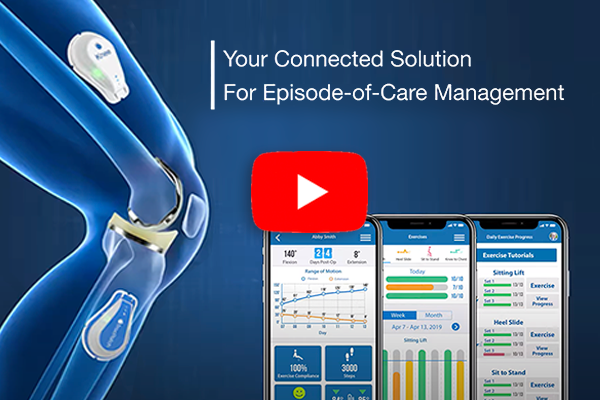EMERGING HEALTHCARE INDUSTRY TRENDS #12: Behavioral Design for Healthcare
In this continuation of our series on emerging trends to watch out for in healthcare continues with this blog, we explore how design can change patient behaviors. As patients’ expectations for pleasant interfaces increase and post-op regimens become increasingly complicated, there is an increased need for design to beneficially shape patients’ behavior. Explore what’s driving this trend, and the implications that it has for care and for the health tech industry in this blog: Behavioral Design for Healthcare.
What is Behavioral Design for Healthcare?
By combining design thinking with behavioral economics principles, designers have begun re-thinking the pre- and post-operation experience. Consisting of both digital and physical experiences, these vital touchpoints have become critical points in time, capable of changing behavior, providing preventative care, and promoting adherence to physicians’ directives.
The key drivers of behavioral design for healthcare are:
1. Consumerization of healthcare: As healthcare becomes increasingly consumerized, patients have higher expectations for the services they receive.
2. Value-based payment methodologies (and the rising cost of care): As value-based care becomes the norm and an overall higher cost of care rages, patients demand more and faster, incentivizing providers to seek out the most intuitive services, user experience, and devices.
3. Availability of big data: Big data analytics provide designers with an invaluable source of information, behavioral insights, and heuristics for guiding both HCP and patient decisions.
4. Patient empowerment: Patients have become more empowered in recent years due to the commercialization of healthcare and increased patient access to their own third-party data.
Why Behavioral Design for Healthcare Matters

While many other industries made big transitions to digital long ago, the healthcare industry has been slow to follow. Consumer-level design and experience are often great at poking us toward action (Think about notifications on your phone’s lock screen or verbal reminders from your voice assistant). Great design thinking, design principles, and design process applied to healthcare can do the same, putting the onus of care on patients to some degree, and helping people and their doctors achieve their goals while outside the office or hospital. For example, some hospitals have developed “Nudge Units” modeled after Penn Medicine’s pioneering process for connecting cardiac patients to rehab after an event and found that referral rates increased by 65%.
The Opportunity: Improving outcomes by helping patients manage their own care regimens
Patients are being asked to take more active roles in their own care beyond the doctor’s office. This has the potential to improve outcomes but can also make post-visit regimens complex. To help, behavioral design for healthcare is taking a leading role to make patients’ tasks more digestible and intuitive. In this way, habit-forming products like apps with notifications can be powerful partners in improving adherence, reminding patients to take their medication, or providing reminders for activity and movement in rehab.
Patients are also returning home sooner after surgeries, creating a growing gap in recovery care. Telehealth and remote monitoring are helping create a bridge, with one offering, TracPatch, offering physicians a look at patients’ range of movement post-surgery. The platform features wearable sensors, offers patients reminders for how and when to exercise, and can guide patients pre-op to establishing a baseline range of movement to begin treatment informed.
Medication regimens are only becoming more complex, with new therapeutics that treat previously untreated chronic conditions. Proteus helps patients manage medications that must be taken at a certain time with a smart pill system that determines when a pill is taken. An ingestible sensor is in the pill, and a reader patch and app complete the system, reminding users when to take their medications.
The Opportunity: Keeping care on track with at-home tech
The proliferation of wearables and smartphones is creating new ways to connect to patients outside the hospital or clinic. Through these virtual connections, providers can track and assess patients’ progress. Along with AI that can predict behavior, this ever-expanding arsenal of tools in the toolkit helps process patients’ actions, human behaviors, and adapt their plans in real-time. These super-personalized care plans absorb missteps and offer interventions on predicted and actual behavior, meaning HCPs can improve outcomes and help patients reach their goals.
Propeller health’s device sits on top of an asthma inhaler to collect data on when, where, and under what environmental conditions patients take their doses. Patients and HCPs can use this information to understand the circumstances around asthma attacks — by understanding their cause, they can plan better proactive interventions. Along with this add-on device, Propeller also developed a free API to help predict areas and environmental conditions that would increase the risk of an asthma attack.
Doctella is a home-based remote care automation platform for patients. It provides a complete end-to-end solution, letting HCPs create and manage treatment plans, patient schedules, and data flow. Customizable CarePrograms are automated and work with home device data aggregation and a web-based provider dashboard to manage care holistically. Data is pushed to patients, providing them with coaching, guidance, notifications, and recommendations. The Doctella secure cloud also offers providers information on when interventions may be needed, helping them better prioritize their patients and inform their decision-making.
The Opportunity: increasing efficiency with behavior-changing tools
Entrenched habits, human behaviors, cognitive biases, and existing processes can slow down the adoption of new behaviors, decreasing efficiency and hurting outcomes. According to a 2016 Deloitte study, 61% of physicians said their greatest need today is improving the routine processes in their clinical practice. To combat these behavioral science obstacles, designers can use tools like nudges, reminders, and the expansion of touchpoints via apps to shape and shift behaviors.
For maximum efficiency, it’s vital that the members within a surgical care team understand others’ roles during set-up. Tools like ScrubUp can help guide nurses and techs to set up the OR according to surgical preferences with step-by-step prompts nudging behaviors toward proper setup. Surgeons’ specific preferences guide the team, ensuring there is no miscommunication. Features like these both increase efficiency and confidence, letting team members across roles know how they can do their part to increase efficiency.
ExplORer Surgical helps with workflow management, increasing clinical efficiency to not only save time but reduce potential exposure to the patient in the OR. The device connects a shared big screen to individuals within the surgical teams’ mobile devices. As the case progresses, each role finds step-by-step instructions according to the surgeon’s preference. These steps can also update based on emergencies, changing during the procedure. By optimizing the procedure and increasing efficiency, the system can ultimately reduce the amount of time a patient spends under anesthesia.
Keep up with the Latest Healthcare Trends with THRIVE
Healthcare tech is rapidly changing — so make sure you stay up to date with the latest news and research. Our series on the top trends of 2021 is almost complete, so go back and check out our previous blogs, and don’t miss next week, our final installment.
THRIVE has years of experience as healthcare tech consultants, and we can help you respond to the industry’s shifting trends so that you can keep your business on track now and into the future. Contact THRIVE today.
RELATED POSTS
If you missed any of the previous posts in this blog series on the future trajectory of healthcare, you can find them here:
Week 1: The Shifting Point of Care
Week 2: The Hyper Personalization of Care
Week 3: Expanding the Continuum of Care
Week 4: Patient Empowerment
Week 5: Physician Empowerment
Week 6: Orchestrating Operating Room Efficiency
Week 7: Human-centered Healthcare Design
Week 8: Improving Medical Device UX Design
Week 9: Improving Contextual Design & Cognitive Empathy
Week 10: Enhanced Data Visualization Tools
Week 11: The Increasing Prevalence of Robot-Assisted Surgery
Week 13: Humanized Patient-Provider Interactions









